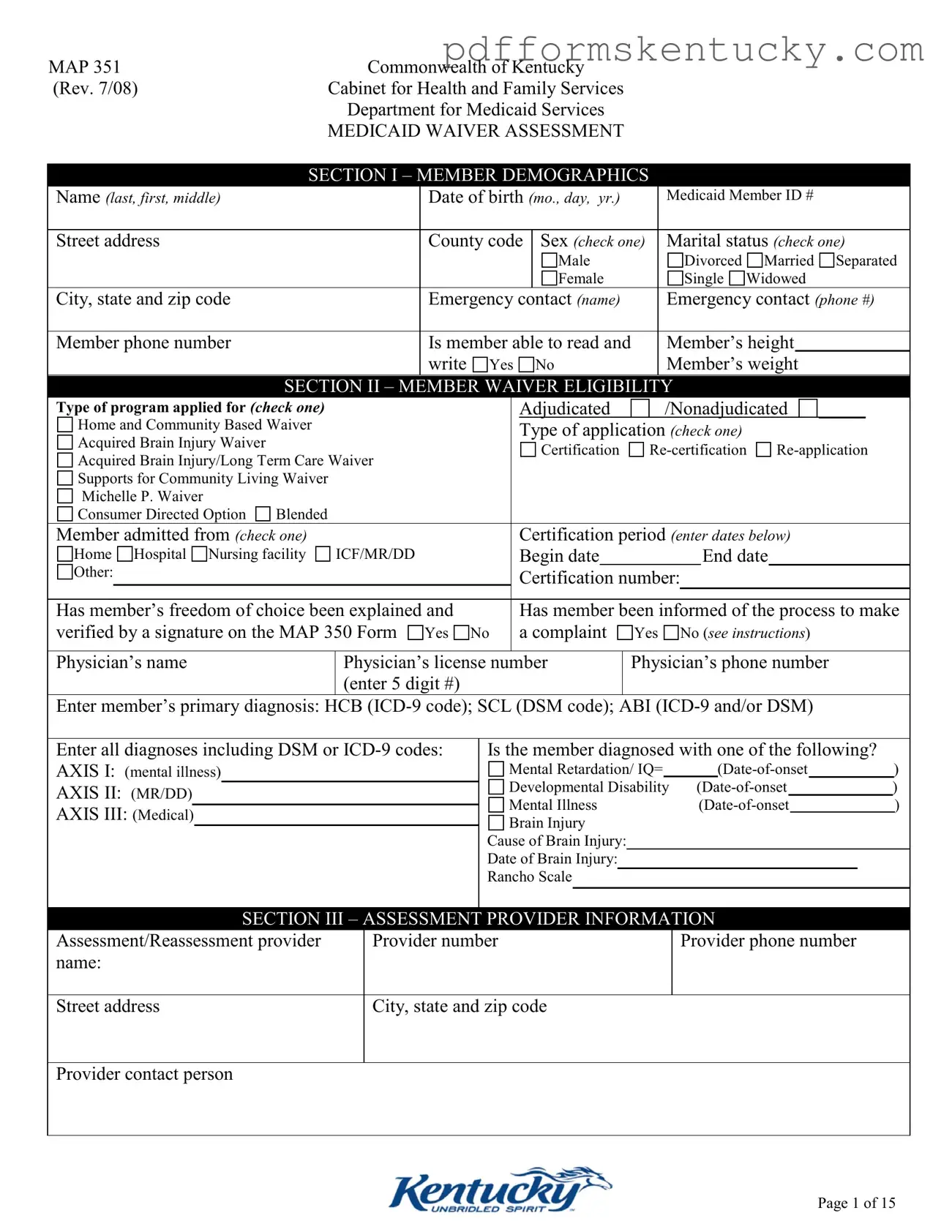What is the purpose of the Kentucky Map 351 form?
The Kentucky Map 351 form is designed to assess the eligibility of individuals for Medicaid waiver programs. It collects essential demographic information, medical diagnoses, and details about the member's daily living activities. This information helps determine the level of support required and ensures that individuals receive the appropriate services based on their needs.
Who needs to fill out the Kentucky Map 351 form?
The form must be completed for individuals applying for Medicaid waiver programs, such as the Home and Community Based Waiver or the Acquired Brain Injury Waiver. This includes new applicants as well as those seeking re-certification or re-application. Family members or guardians may assist in completing the form for individuals who are unable to do so themselves.
What information is required in the Kentucky Map 351 form?
The form requires various types of information, including the member's name, date of birth, Medicaid Member ID, and contact details. It also asks for details about the member's medical history, including diagnoses and any assistance needed with daily living activities. Additionally, emergency contact information and assessments of the member’s ability to perform instrumental activities of daily living are required.
How is the information from the Kentucky Map 351 form used?
The information gathered from the Map 351 form is used by the Cabinet for Health and Family Services to evaluate the member's eligibility for Medicaid waiver programs. It helps determine the level of care and support services needed to assist the individual in their daily life. Accurate and complete information is crucial for ensuring that members receive the appropriate resources and assistance.
